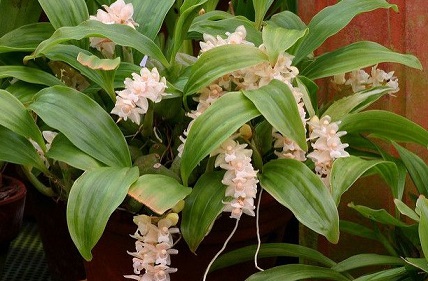Taiwanese Study Finds That Dihydrophenanthropyrans From Pholidota Chinensis Alleviates Neutrophilic Inflammation By Inhibiting MAPKs
Nikhil Prasad Fact checked by:Thailand Medical News Team May 17, 2024 1 year, 7 months, 4 weeks, 2 days, 5 hours, 20 minutes ago
Herbs And Phytochemicals: Researchers from Chang Gung University of Science and Technology, National Cheng Kung University, Ming Chi University of Technology, and Chang Gung Memorial Hospital in Taiwan have made a groundbreaking discovery. Their
Herbs And Phytochemicals study has identified five dihydrophenanthropyrans phytochemicals isolated from the pseudobulbs of the Pholidota chinensis plant, revealing their significant potential in alleviating neutrophilic inflammation by inhibiting mitogen-activated protein kinases (MAPKs). This exciting development could pave the way for new therapeutic agents targeting inflammatory conditions.
 Dihydrophenanthropyrans From Pholidota Chinensis Alleviates
Dihydrophenanthropyrans From Pholidota Chinensis Alleviates
Neutrophilic Inflammation By Inhibiting MAPKs
Thailand
Medical News would like to stress that this discovery is potentially useful for treat COVID-19 and Long COVID conditions where neutrophils are in a ‘heightened and inflammatory state’ and where various MAPKs are activated and their expressions upregulated.
The Discovery of Dihydrophenanthropyrans
The research team successfully isolated five distinct dihydrophenanthropyrans (compounds 1–5) from the pseudobulbs of Pholidota chinensis. Among these compounds, 1,3-di(4′-hydroxybenzy)-imbricatin (compound 3) was particularly noteworthy as it was identified in nature for the first time. The structures of these compounds were meticulously elucidated and confirmed using various advanced spectroscopic methods.
Potent Inhibitory Effects on Neutrophilic Inflammation
The study revealed that these dihydrophenanthropyrans exhibit a potent inhibitory effect on N-formyl-methionyl-leucyl-phenylalanine (fMLF)-induced superoxide anion generation and elastase release in human neutrophils. The IC50 values for these effects ranged from 0.23 to 7.63 μM, demonstrating a strong dose-dependent inhibition. This inhibition is critical as excessive superoxide anion generation and elastase release are key contributors to the inflammatory response in various diseases.
Mechanisms of Action: Ca2+ Clearance and ROS Scavenging
Further investigation into the mechanisms of action revealed that dihydrophenanthropyrans (compounds 1-3) also possess a dose-dependent reactive oxygen species (ROS) scavenging effect. This property is particularly important as ROS play a pivotal role in the inflammatory process, and their scavenging can significantly reduce oxidative stress.
Additionally, dihydrophenanthropyrans (compounds 2–3) were found to reduce intracellular Ca2+ concentration ([Ca2+]i) in fMLF-activated human neutrophils. The reduction in [Ca2+]i is crucial because elevated intracellular calcium levels are associated with the activation of inflammatory pathways.
Selective Inhibition
of Key Signaling Pathways
One of the most significant findings of the study was the selective inhibition of key signaling pathways by dihydrophenanthropyrans. Compounds 1-3 were shown to selectively inhibit the phosphorylation of c-Jun N-terminal kinases (JNKs) and p38 MAPKs, which are essential mediators of the inflammatory response. Additionally, only compound 1 was found to inhibit the phosphorylation of extracellular signal-regulated kinases (ERKs) in fMLF-activated human neutrophils. Interestingly, none of the compounds affected protein kinase B (AKT) activity, indicating a targeted action on specific signaling pathways.
.jpg) Graphical Abstract
Implications for Therapeutic Development
Graphical Abstract
Implications for Therapeutic Development
These findings highlight the potent anti-inflammatory capabilities of dihydrophenanthropyrans, underscoring their potential as therapeutic agents for conditions associated with neutrophil-mediated inflammation. By inhibiting superoxide anion generation, suppressing elastase release, and selectively modulating key signaling pathways, dihydrophenanthropyrans offer a promising approach to managing inflammatory diseases.
The study findings were published in the peer reviewed journal: Fitoterapia
https://www.sciencedirect.com/science/article/abs/pii/S0367326X24001989
For the latest on
Herbs And Phytochemicals, keep on logging to Thailand Medical News.

.jpg)